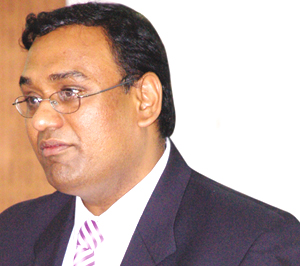
 Dr Pramod Kumar Meherda, Mission Director (NRHM), Department ofHealth & Family Welfare, Government of Odisha, thinks technology is allinvasive as it can help healthcare reach the masses. In conversation withNayana Singh & Manjushree Reddy, ENN
Dr Pramod Kumar Meherda, Mission Director (NRHM), Department ofHealth & Family Welfare, Government of Odisha, thinks technology is allinvasive as it can help healthcare reach the masses. In conversation withNayana Singh & Manjushree Reddy, ENN
How do you think ICT is helpful in Health & Family WelfareDepartments?
The Health Department deals with alot of complex systems. Added to that,every task here is urgent and has tobe done in a time bound manner. Forinstance, whether you are procuringdrugs or dealing with logisticsand supply of consumables, vaccinesetc, you need to know whether theyhave reached the desired destinationwithin the desired time or not. In myopinion, ICT is very important forHealth & Family Welfare Departmentto manage complex systems withthe much needed accountability andtransparency.

How has Health & FamilyDepartment in Odishaleveraged ICT to manage thesecomplex systems?
Under the initiative, which we call e-Swasthya, we took up several e-innovationsin the last few years. One ofour major accomplishments has beene-Blood Bank, the first of its kind webbased MIS to improve managementand functioning of blood banking system.By linking all the blood banks inthe State, the public interface underthis initiative allows real time accessingof data relating to availability ofdesired blood group. By doing awaywith the manual system of accessinginformation on required quantityof blood units from specified bloodbanks, the initiative has brought inthe much needed transparency in theblood banking system.
Likewise, we also have OdishaDrug Inventory Management System(ODIMS). Here, we track, in real time,if all the procured drugs have reachedthe destination, the stock position ofvarious drugs at any given point oftime, information on expiry of drugs,further requirement of drugs, etc.Similarly, the Drug Testing and DataManagement System, a web basedapplication has helped automation ofthe day to day work processes of theState Drug Testing and Research Labarotary.
We have also launched HumanResource Management InformationSystem (HRMIS) and e-Attendanceto manage and keep track of employees.HRMIS facilitates a GIS based HRplanning and management.
In Odisha, we have the State MalariaInformation System, a GIS-basedapplication, which helps in providinginformation on pidemiologicaland surveillance parameters relatedto malaria. Apart from this, with thehelp of C-DAC, we have introducedtelemedicine facilities upto DistrictHeadquarter Hospitals.
We are now in the process of integratingall these initiatives with amore comprehensive Hospital ManagementInformation System (HIMS).
One of our majoraccomplishmentshas been e-BloodBank, the first of itskind web basedMIS to improvemanagementand functioningof blood bankingsystem

Please tell us how you managethe order requirements?
The entire planning is being donethrough web based applications, integratingthem with GIS platforms. GIShas very strong foot forward in publichealth management under NRHM.I have already mentioned aboutODIMS, the drug testing and datamanagement system, and e-BloodBanking, which help us in managingorder requirements in their respectivefields. We have placed adequate staffat various levels for timely data entryand analysis.
How can we address theconsistent challenge ofconnecting to the people inremote and rural areas?
This requires a multi-pronged strategy.In Odisha, we have tried to providedifferential incentives to doctors to encouragethem to serve in rural healthcentres. Besides, we are taking careof the need for adequate and qualityinfrastructure at our delivery points,including staff quarters for health personnelserving in rural areas.
It is also important that we reachour rural and tribal population attheir doorsteps to reduce their out ofpocket expenditure on health and tobuild their confidence in public healthsystems, such as through MobileHealth Units (MHUs). At present, 354Mobile Health Units are operational toprovide primary health care servicesat the community level in 7850 mostdifficult villages on a fixed day everymonth. A Mobile Health Unit has fivepersons: a doctor, an ANM, pharmacist,attendant and a driver. These mobileunits take care of minor ailmentsand if there is anything beyond theircontrol, they refer them to the senior doctors. We already have two suchunits in all the blocks of tribal areas.
Free referral transport servicesthrough 466 Janani Express and 422Ambulances have helped us in providingaccess to rural opulation duringcritical situations. More than fourlakh pregnant women and 35,000 sicknewborn babies are being benefittedannually in this way. We have alsoset up maternity waiting homes (MaaGruha) in remote tribal areas, wheremothers arriving early for institutionaldeliveries are kept under medicalsupervision till they are shifted to thehealth institution for actual delivery.Similarly, over the years, stepshave been taken to provide healthcare services through active involvementof the people. This has beenachieved with the help of more than43,000 ASHAs and formation of GaonKalyan Samitis in all the revenue villages.To cite an example; last year,at the village level, 2.50 lakh personswere diagnosed and treated forMalaria by ASHAs. Likewise, in thesame period, ASHAs successfully ollowed up 20,000 TB patients and500 suspected Leprosy patients atvillage level. Community nvolvement has now become the mainstayfor public health service delivery inrural areas.
Be a part of Elets Collaborative Initiatives. Join Us for Upcoming Events and explore business opportunities. Like us on Facebook , connect with us on LinkedIn and follow us on Twitter , Instagram.











